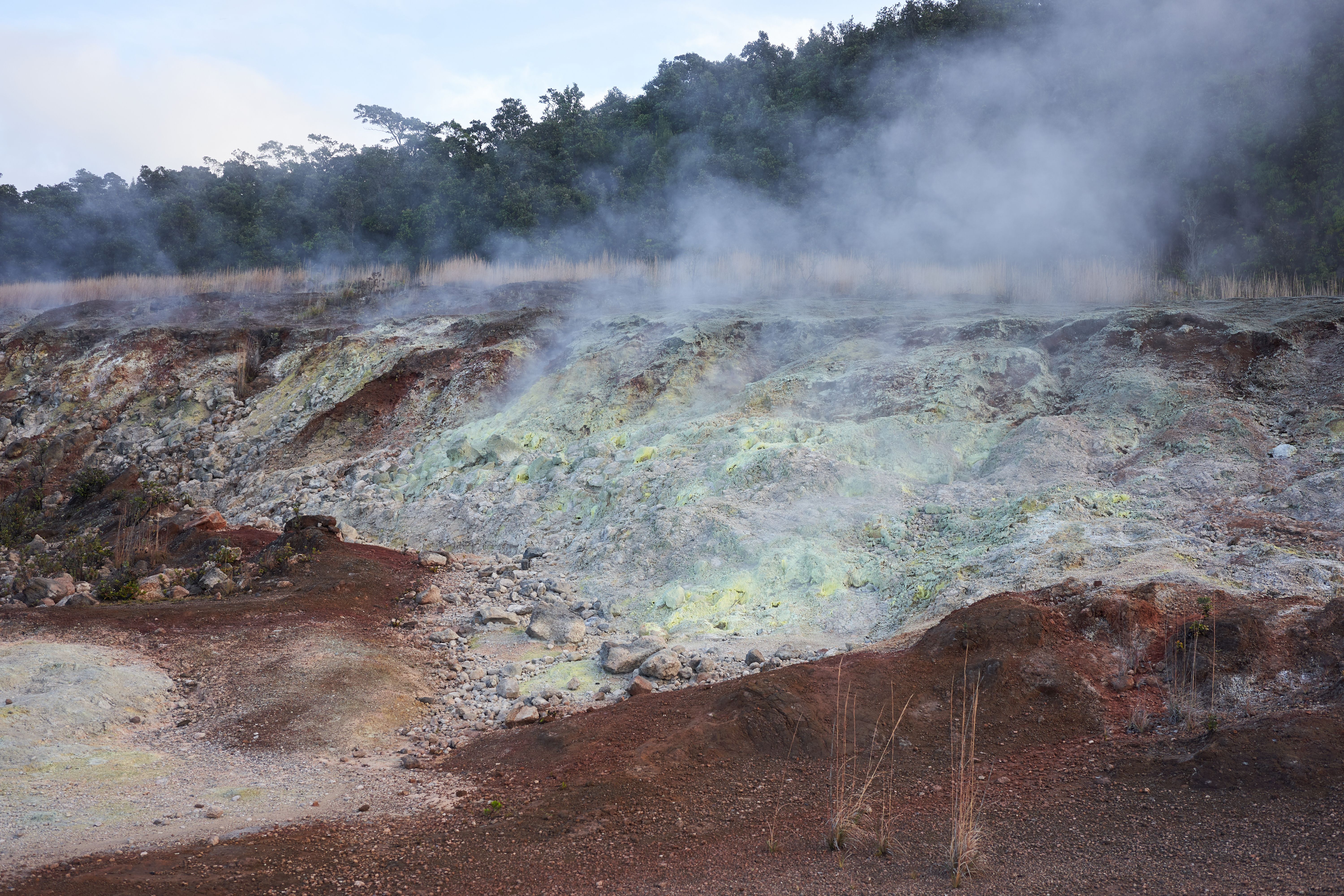Fluorescent Probe FlaN-DN Developed for Hydrogen Sulfide Detection and Intracellular Imaging
Researchers have developed a selective fluorescent probe, derived from flavone derivatives, called FlaN-DN for hydrogen sulfide (H2S) detection and intracellular imaging.
A new study published in Spectrochimica Acta Part A: Molecular and Biomolecular Spectroscopy shows how a new fluorescent probe, FlaN-DN, can detect hydrogen sulfide (H2S) better than traditional, previously reported methods. The FlaN-DN probe demonstrated a rapid response time, excellent selectivity, and several practical capabilities (1). It was derived from a series of flavone derivatives (1).
Volcanic gases rich in carbon dioxide, sulfur dioxide and hydrogen sulfide seep out of the ground along with groundwater steam at Sulphur Banks (Ha'akulamanu) in Hawaii Volcanoes National Park. | Image Credit: © Tada Images - stock.adobe.com

Detecting hydrogen sulfide (H2S) in intracellular imaging is important. H2S plays a vital role in several cellular process, serving as an important gasotransmitter (1). It is involved in various physiological and pathological events within cells, including in cellular signaling pathways, modulating enzymatic activities, and regulating cellular redox homeostasis (1). Understanding the spatial and temporal distribution of H2S within cells can provide valuable insights into its physiological functions and contribute to the diagnosis and treatment of related diseases (1). Researchers can use fluorescent probes to track the dynamics of H2S in live cells, enabling a deeper understanding of its roles in cellular processes and facilitating the development of targeted therapeutic strategies (1). Furthermore, intracellular imaging of H2S can aid in studying its interactions with other cellular components and help unravel its complex mechanisms of action (1).
Two fluorophores and two recognition groups in an orthogonal design were used to design the probe. Once the probe was designed, it went through a screening process, and it was found that FlaN-DN emerged as the most promising probe because of its selectivity ability and its response intensities (1). The probe exhibits both chromogenic and fluorescent signals upon exposure to hydrogen sulfide (1).
There are several probes capable of H2S detection. What separated FlaN-DN from the other probes is because of its rapid response times and having the ability to provide detectable signals within 200 s (1). Furthermore, FlaN-DN is sensitive to pH conditions, enabling its application in distinguishing the microenvironment of cancer cells (1).
FlaN-DN showcases practical capabilities with a wide linear range of detection from 0 to 400 μM, a relatively high sensitivity with a limit of detection of 0.13 μM, and exceptional selectivity towards H2S (1). Additionally, the probe is characterized by its low cytotoxicity, making it suitable for imaging living cells (1). The researchers successfully employed FlaN-DN for detecting endogenously generated H2S and visualized its dose-dependent responses to exogenous hydrogen sulfide levels (1).
This research highlights the potential of natural-sourced derivatives, such as flavone derivatives, as functional implements for various applications. The development of FlaN-DN as a selective fluorescent probe for hydrogen sulfide not only expands our understanding of H2S detection, but it also introduces new possibilities for intracellular imaging and the exploration of cellular microenvironments (1).
Thanks to the performance of the fluorescence probe FlaN-DN, it improves H2S detection and furthers intracellular studies, contributing to advancements in biomedical research and diagnostics.
Reference
(1) Sun, T.-T.; Man, R.-J.; Shi, J.-Y.; Wang, X.; Zhao, M.; Hu, H.-Y.; Wang, C.-Y.A selective fluorescent probe for hydrogen sulfide from a series of flavone derivatives and intracellular imaging. Spectrochimica Acta Part A: Mol. Biomol. Spectrosc. 2023, 299, 122840. DOI: 10.1016/j.saa.2023.122840
A Proposal for the Origin of the Near-Ubiquitous Fluorescence in Raman Spectra
February 14th 2025In this column, I describe what I believe may be the origin of this fluorescence emission and support my conjecture with some measurements of polycyclic aromatic hydrocarbons (PAHs). Understanding the origin of these interfering backgrounds may enable you to design experiments with less interference, avoid the laser illuminations that make things worse, or both.